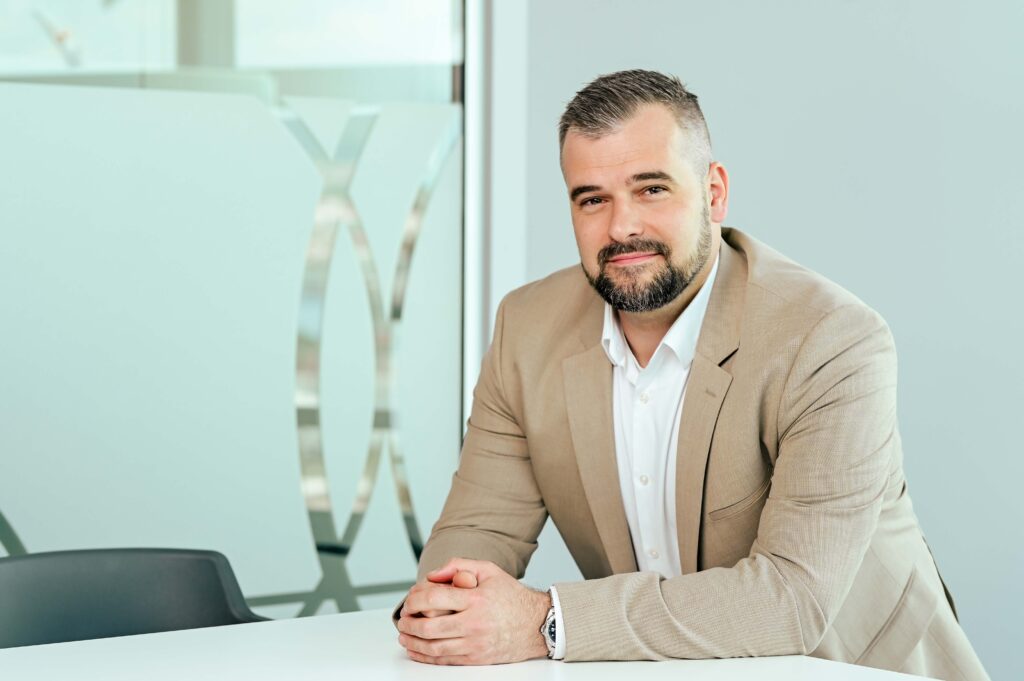
ASEE has developed its own contact center management platform in Croatia and a specialized voicebot in Croatian. We learned the details directly from Tomislav Črgar, Business Director for the CX Solutions segment at ASEE Croatia.
Live is a contact center and comprehensive customer communication solution developed by ASEE experts and currently has more than 70 implementations worldwide – approximately 50% in the banking sector, while the rest relate to a number of other industries, in total in about twenty different sectors. We already cooperate with most of the key banks on the Croatian market and are present globally in a dozen countries. Live software development has been continuously taking place in Croatia for over 15 years, where our main development team is located. One of the recent examples of implementation is a project for a company that manages the water supply of Vilnius, the capital of Lithuania.
We developed a complete business process management system for them. We automated dozens of different processes, including requests for new water connections when building new facilities, laboratory testing of water quality, and many other internal operations. This enabled the complete digitalization and optimization of this public utility company's operations.

After implementing the Live platform, companies get one centralized solution in which all business processes are automated and unified. This enables better internal efficiency – the company has a complete overview of all customer processes and interactions, reducing errors and enabling faster responses. For end users, this means more straightforward and consistent access to all services through a single communication channel, without needing to repeat requests or search for information through multiple departments.
Many companies that decide on Live do so precisely because of the desire to modernize customer support, especially in contact centers. We notice that more and more users expect the availability of services through digital channels, which creates an additional burden for contact centers and back offices. The Live solution helps to balance these requirements with available resources, increasing efficiency without compromising the quality of the user experience. We have been incorporating elements of artificial intelligence, machine learning, and automation into the Live solution for years, and we have also developed our own voicebot to improve customer support further and enable even faster and more efficient system operation.
Vertical SaaS is experiencing strong growth, especially among small and medium-sized enterprises. According to some industry reports, this particular customer category has seen double-digit growth in the use of vertical solutions in the last few years. We have been applying this approach to enterprise clients for years. The reason for its popularity lies in the fact that vertical SaaS addresses very specific needs within a particular industry, enabling greater efficiency, faster implementation, and better customization for end users.

In the previously mentioned example of our Live solution, it is a platform that combines several key business functions: management of back office processes and customer care, coordination of field workers, and sales and delivery of services - all through one application. This brings clarity to clients, saves time, and significantly simplifies operational business. Industries that benefit the most from this approach are those with many user interactions and complex operations, such as utilities, telecoms, healthcare, and, of course, the financial sector.
The introduction of automation in contact centers and CRMs certainly changes the way employees work. It usually frees them from repetitive, administrative tasks and allows them to focus on better communication with customers, solving more complex queries, and performing more creative tasks. Of course, as with any change, there is some resistance—it's a natural human reaction. This is precisely why we apply proven change management practices from the very beginning.
We do not view the role of implementation only through the technical aspect; we position ourselves as consultants and partners, i.e., experts who deeply understand users' business needs and daily challenges. Employees must see concrete benefits for themselves—less manual input, fewer errors, faster insight into data—and then automation is no longer a threat but a support in their work.
We primarily rely on the expertise of our development teams, and we use certain AI tools in a controlled and secure manner, in accordance with internal guidelines and best practices. The expectations have definitely changed – with AI tools, the pressure to deliver quality software faster also increases. However, it is important to emphasize that AI still cannot replace an in-depth understanding of the problems that clients want to solve. It is an auxiliary tool, not a substitute for people - and we maintain this approach in every project.
I do not agree with the statement that AI will replace Developers and Product Managers. Artificial intelligence currently functions more as a passenger than a driver—a support in everyday tasks but not a substitute for the strategic thinking, contextual understanding, and decision-making that are crucial for developers and PMs alike.
The role of Product Manager has certainly evolved. Today, they are expected to have an even greater understanding of technology, the ability to quickly adapt to AI-based tools, and make decisions that balance user needs, technical capabilities, and business goals. AI can help analyze data, track metrics, and even generate suggestions, but product vision, user empathy, and the ability to coordinate teams remain human domains. The same is true for developers – AI can speed up code writing or bug detection, but still doesn't understand the project's context or users' real needs. The key value is precisely in the cooperation between man and technology.

Yes, as part of the Live solution, we have developed our own AI voice bot—more precisely, a voice assistant that can conduct conversations in Croatian. This is a challenging but also very exciting area, especially because we are trying to develop a solution that is not just a “demo effect” but can actually help users in a real contact center. The main challenges in implementing such a system are multi-layered.
First, we need to ensure flexibility – we develop each part of the system (speech recognition, language understanding, response generation, and speech synthesis) in a modular way, so that we can easily replace or upgrade them when new, better technologies emerge. This ensures the long-term sustainability of the system (future proofing). Another important aspect is adaptability – each client has their own, more or less specific requirements from a voicebot.
We are trying to design a system that can handle various datasets, private and publicly available information, controlled, pre-defined responses, or more “free” speech, and the like. Here we also come to a series of integrations with other systems in the client’s environment. And of course – scalability. The solution must handle different load levels and be used in various industries, from the financial sector to utilities, without compromising on the quality of the conversation.
Achieving natural conversation in a language like Croatian is definitely one of the main challenges. The Croatian language has a complex syntax and numerous dialects, which makes it more demanding for training models compared to, for example, English. The biggest challenge is not only the linguistic structure but also the limited amount of high-quality linguistic data—Croatia is a small country in global terms, and the available datasets are fragmented and often insufficient for training advanced models. However, there is an engineering approach and solution for everything.
We focus on using custom models and careful data selection. With sufficiently high-quality examples, it is possible to train models that understand and produce natural speech, and most importantly, that do so in the context of real user needs. Here we rely on cooperation with various dear people from the AI community, both internally within the ASEE group, and also with colleagues in other companies dealing with similar topics. I have to say that there is a lot of "alive" on the local scene, which makes this whole story even more interesting.
This interview was originally published on the Debug website. Tomislav Črgar also expanded on these topics in a video interview available on their platform.
Learn more about how the Live product family can help you support and improve your customer experience strategy.